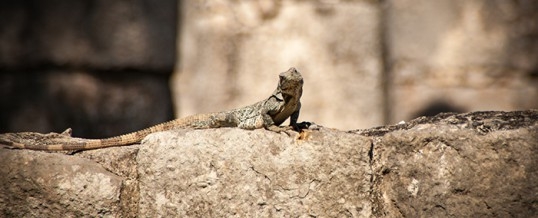Interactions between thermoregulatory behavior and physiological acclimatization in a wild lizard population
December 3, 2018

Martha Muñoz just published a new paper in the Journal of Thermal Biology. Behavioral thermoregulation and physiological plasticity have long been recognized as key traits that should buffer organisms from the pernicious effects of climate warming. Behavior and plasticity, however, are usually studied independently. By examining patterns of thermoregulation and physiological plasticity in a single population over the course of a year, the researchers demonstrated that the traits are not independent – thermoregulation is constrained by physiological plasticity. When considered in the framework of environmental warming, lizards might have a limited ability to mount a strong buffering response. This research is part of a new and ongoing collaboration with scientists at the Universidad Nacional Autónoma de México (UNAM). The next phase of this research is to conduct a macroevolutionary study of behavior and physiology across the whole clade of spiny lizards.
Stay tuned!
Study Highlights:
- Behavioral thermoregulation and plasticity share physiological phenotypes.
- We examined thermoregulation and plasticity in a wild lizard population.
- Thermoregulation during the day potentially limits heat tolerance plasticity.
- Limited thermoregulation at night potentially contributes to cold tolerance plasticity.
- The preferred body temperature is labile across seasons, contributing to high thermoregulatory efficiency year-round.






